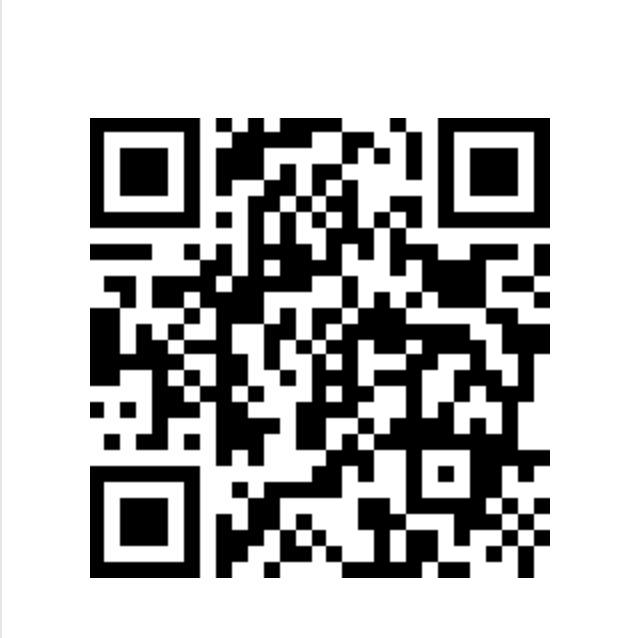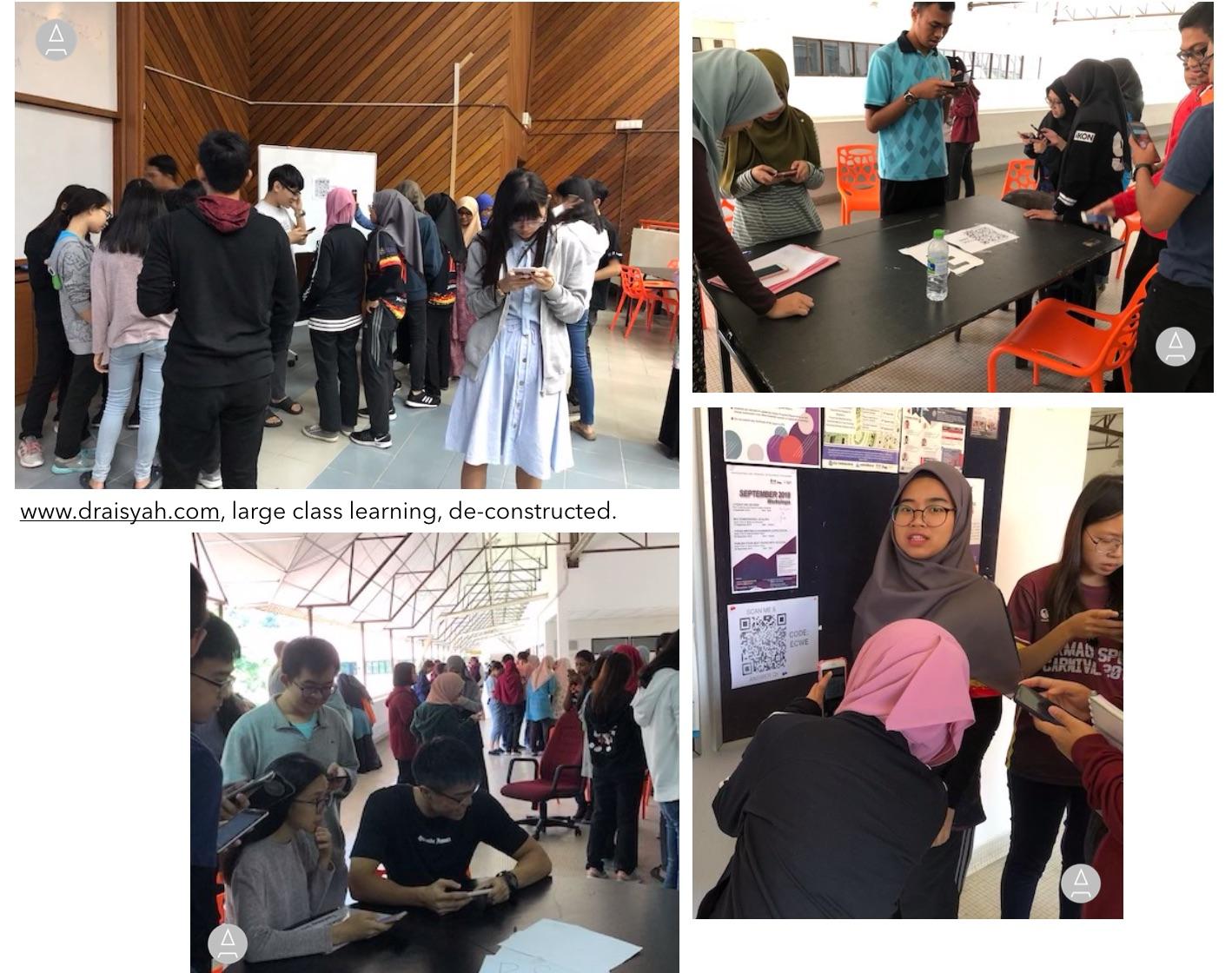Spending 1 hour just talking about binding interactions between a drug and a protein target is no fun. Hydrogen bonding, van der Waals, dipole-dipole moment. No fun for me, as I’ve been doing it for the last 10-odd years. Repeating the same thing, year in, year out. And no fun for students, presumably ‘soaking’ in the concepts of binding interactions. Since we are in the topic of “drug interactions”, learning it should be interactive, if not engaging. A two-way street, an intersection, a roundabout – rather than a one-way street.
So this semester, I wanted to do something different. It’s a kind of motivating to try out new ways to approach teaching ‘same stuff’. That’s what I always aim for every semester. Experimenting with new ideas to engage a large classroom. Learning how far one can stretch an idea or approach…
Augmented reality chemistry project
I’ve been toying with the ideas of bringing augmented reality (AR) into my class using a trigger–perhaps with QR code or photos/icon (Aurasma=HP Reveal). It’s been in the backburner for a year plus. The thing about simply implementing technology in silo, without considering the context, without connecting the dots–would likely to be meaningless [1].
*Yesterday, I chanced upon this interesting article by Nathan Gitter on Medium. He highlighted 5 concepts of AR and its utility in everyday things. I’m not a developer or an engineer. In my view as an educator, what’s super important is the context, where I want to take my students and what I want them to experience in their learning – through their senses, with their peers and then reflect upon the experience. Gitter’s article gave me some new ideas where to take my students further in chemistry (Hehehe…). Lectures play a minor role in imparting such learning experience. And it doesn’t have to be within a four-wall. This is when fun comes in 😉
This AR structure project is built on an earlier pilot project on 3D printing. With the help of 3 FYP students and some undergrad volunteers, we managed to 3D printed several drugs and protein structures. The high cost associated with 3D-printing a drug and its receptor couldn’t be sustained through self-funding, unfortunately. Here’s an intro video created for FAR212 Principles of Medicinal Chemistry eLearn@USM LMS in 2015.
Yet I still wanted my students to explore drug structures further. These structures with corresponding proteins hold the secrets to its pharmacological action and clinical manifestations. I remember when I was a pharmacy undergraduate at the Welsh School of Pharmacy, I took a final year project on Drug Modelling. There was only one Silicon Graphics computer in the entire building, or perhaps the entire university or state. It’s very expensive, due to it being a high performance computer that one could use to manipulate and help visualise drug-receptor interactions in silico. And there’s a looong queue for the computer. Of course, the priority was to the postgrads and researchers.
The joy of ‘seeing’ a molecule in your hand
Knowing that the Brits would promptly go home at 5 pm, I told myself to be patient. I waited for my turn. From 5 pm onwards, I had the computer to myself until the Redwood building was closed around 9 pm. It was fun.
But why was it fun? Or interesting?

Holding and seeing a drug molecule, enalaprilat in my hand.
Use Augment app to scan the QR code.
As human beings, our vision is limited to physical things in certain sizes or colours (within the narrow visible light spectrum). We can’t see the beautiful structures of a virus, a cell, an enzyme or even a drug molecule. With tremendous advances in sciences and computing power in the last decades, visualisation of such structures and interactions can be easily performed using a personal computer or even a mobile phone. The joy of holding a drug compound or a protein receptor in your hands, manipulating it, is indescribable [2]. To see how it’s bent at certain parts of the compound, instead of a straight line as shown above. Or how a drug could possibly dock in the active site. It’s wonderful.
Coming back to de-constructing learning for this medicinal chemistry course. Since I’ve been using microlearning approach in the last 2 semesters, it is only natural to de-construct learning for a topic. How to go about doing that?
Starting with the end in mind
That reminds me of an approach used in organic synthesis i.e. retrosynthetic pathway (retrosynthesis). Due to the arduous synthesis of a huge compound (often a natural product), often chemists would breakdown a huge molecule into much simpler molecules in a sequential manner. This exercise would eventually lead to identification of building blocks that are commercially available or easily synthesised. My synthetic chemistry’s quite rusty nowadays; but I can use that thinking in this context.
De-constructing learning for my large class was fun. It’s a bit like planning a journey too – playing with different “permutations” until it feels right. I also thought it’s best to start a topic from where my students are. Thus, the big topic were broken down until the smallest unit possible–a unit where I can meet my learners. Not from where I am.
Upon reflection, I realised this is extremely critical for learning.
Learning de-constructed
In this experiment, the learning path from one sub-topic to another is not linear or set by me, the instructor. The QR codes of Google Forms are placed at different parts in the pharmacy school, including at my office door 😉 A bit of legwork is good, after sitting for few hours in the ice-cold lecture halls. There is no label on the QR codes, except by colours. It doesn’t mean anything to students. There is no indication of a learning sequence. Students will discover the sub-topic when the scan each QR code and answer the questions. When they attempt the questions, they seem to be more aware of their own thinking/understanding.
And this little experiment is based on individual work, which would contribute to the team’s performance. Even though, they had the flexibility on choosing which QR code to start with, they need to strategise for the team.

Given the space to roam around and discover what they’d learn, I observed students tend to work together without being told, seemed more excited yet reflective of their own performance and how they’d affect their team members. Interestingly, they sought help from and re-group with their team mates without me having to organise a group, e.g. jigsaw.
… leading to something that makes sense to my students.
After a short debriefing session, I discovered that they were able to re-construct the intended learning in the next lecture. How did I discover this? In my lecture hour, instead of just standing in front, I walked up to my students asking them to show and explain what they’ve learned. Like maths, learning chemistry requires drawing structures. Drug interactions with a protein are often indicated with dots, curly and straight arrows, wiggly maggi-mee lines. Thus, making learning visible is important towards understanding drug-protein interactions.
From my students’ sketches, I could see that they were able to put together various binding interaction far quicker and more accurate than previous batch of students, who had the hour-long lecture. It seems that they could make sense of binding interactions between a drug and a protein. Smart =)
I find this experiment fascinating–leveraging on the use of readily available/free technology and human motivation to organise a large class. De-constructing learning just takes 1-2 hours to re-design an hour lecture slot. And I shall raise a bar on this little experiment combining augmented reality of drug structures in the coming lecture hour.
Lectures are perhaps… so yesterday? 😉
[1] In a recent AR session for educators that I co-facilitated, they learned the process of creating AR artifacts. Then, some of them personally asked me what’s the point of all these? How could they use this AR technology to effectively help students and their learning? It’s very tempting to breeze through a process, but this is one of the many huge gaps that a facilitator needs to be aware of and addressed during a workshop. Debriefing may be slow but an important part of learning. A sense-making.
[2] I am grateful for the free resources and software provided by i) RCSB PDB, the model of N8 neuraminidase bound to zanamivir (2HTQ); ii) Pubchem Project for the chemical/drug compounds used in my classes and in the blog, iii) UCSF Chimera for the molecular visualisation tool and iv) Augment for making AR possible in education.

Comments are closed.